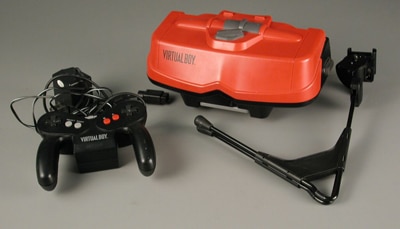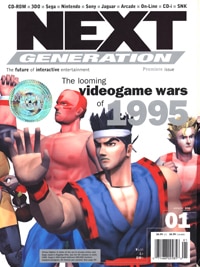 Game enthusiast Joseph Qualls recently donated more than 750 back issues of video game magazines to NCHEG. The magazines, mostly from the 1990s, wonderfully document the industry’s transition into the 32-bit era and beyond. Select almost any time from that decade and you will learn about the state of video games from this collection. Take January, 1995, for example. Want to know what was hot that month? Electronic Gaming Monthly thought it was Killer Instinct; GamePro featured Earthworm Jim; and Game Players touted Mega Man X2. The console war was heating up, as technology leaders like 3DO faced competition from new rival game systems like the Sony Playstation and the Sega Saturn. (Nintendo also debuted the Virtual Boy, with Gamefan noting optimistically that “Nintendo plans to sell about 3,000,000 units and 14,000,000 cartridges in the first year of the system’s release.”)
Game enthusiast Joseph Qualls recently donated more than 750 back issues of video game magazines to NCHEG. The magazines, mostly from the 1990s, wonderfully document the industry’s transition into the 32-bit era and beyond. Select almost any time from that decade and you will learn about the state of video games from this collection. Take January, 1995, for example. Want to know what was hot that month? Electronic Gaming Monthly thought it was Killer Instinct; GamePro featured Earthworm Jim; and Game Players touted Mega Man X2. The console war was heating up, as technology leaders like 3DO faced competition from new rival game systems like the Sony Playstation and the Sega Saturn. (Nintendo also debuted the Virtual Boy, with Gamefan noting optimistically that “Nintendo plans to sell about 3,000,000 units and 14,000,000 cartridges in the first year of the system’s release.”)
 Rereading these magazines reminds us that preserving the history of electronic games means much more than saving just the games themselves. In its collecting, NCHEG tries to gather materials that reflect the entirety of the gaming experience, from production to consumption. ( You can read more about NCHEG’s interpretive approach here.) The history and culture of gaming cannot be fully understood without acknowledging the vital role of gaming magazines for several reasons:
Rereading these magazines reminds us that preserving the history of electronic games means much more than saving just the games themselves. In its collecting, NCHEG tries to gather materials that reflect the entirety of the gaming experience, from production to consumption. ( You can read more about NCHEG’s interpretive approach here.) The history and culture of gaming cannot be fully understood without acknowledging the vital role of gaming magazines for several reasons:
1) Magazines document the games. When scholars research the history of video games, they will need sources to understand them. The games themselves are traditionally the main source of information, but video game magazines provide quick summaries of the games themselves, supply plenty of screen shots, and contextualize them. Perhaps even more importantly, these magazines help to explain how a game is played and what its strengths and weaknesses are, while also highlighting why it’s different or similar to its predecessors. Plus, gaming magazines provide this data in a compact, easily accessible format.
2) Magazines are part of play. Magazines are important not only for their game descriptions but because they form an element of the play culture that surrounds electronic games. Play begins with anticipation, and awaiting a game heightens the play experience. With their sneak peeks, previews, and status updates, magazines facilitate this emotion.
3) Magazines help establish and sustain gaming culture. They provide information to gamers and connect gamers with others in the gaming community. The mere fact that they are published reminds readers that, “Hey, there are a lot of other people like me who think video games are really awesome.” Increasingly, game sites on the Web are serving this need, yet many of these online sites build on models first developed in print journalism.
4) Paper lasts forever. OK, not forever, but properly preserved magazines will last for a very long time. Historians will not need to worry about what platform a game runs on or if a floppy will fail. Paper doesn’t suffer bit rot. Historians 50, 100, 200, and even 500 years from now will be able to research and learn about the history of electronic games by studying these colorful periodicals.
 For these reasons we’re especially pleased with this addition to our existing print collections. If you want to learn more about the history of electronic games magazines, I recommend Kevin Gifford’s Game Mag Weaseling column in GameSetWatch. And if you have old electronic game magazines you would like to donate, please contact us at NCHEG–we’d love to add to our periodical collection and ensure these magazines’ preservation.
For these reasons we’re especially pleased with this addition to our existing print collections. If you want to learn more about the history of electronic games magazines, I recommend Kevin Gifford’s Game Mag Weaseling column in GameSetWatch. And if you have old electronic game magazines you would like to donate, please contact us at NCHEG–we’d love to add to our periodical collection and ensure these magazines’ preservation.
By Jon-Paul Dyson, Director, International Center for the History of Electronic Games and Vice President for Exhibits



